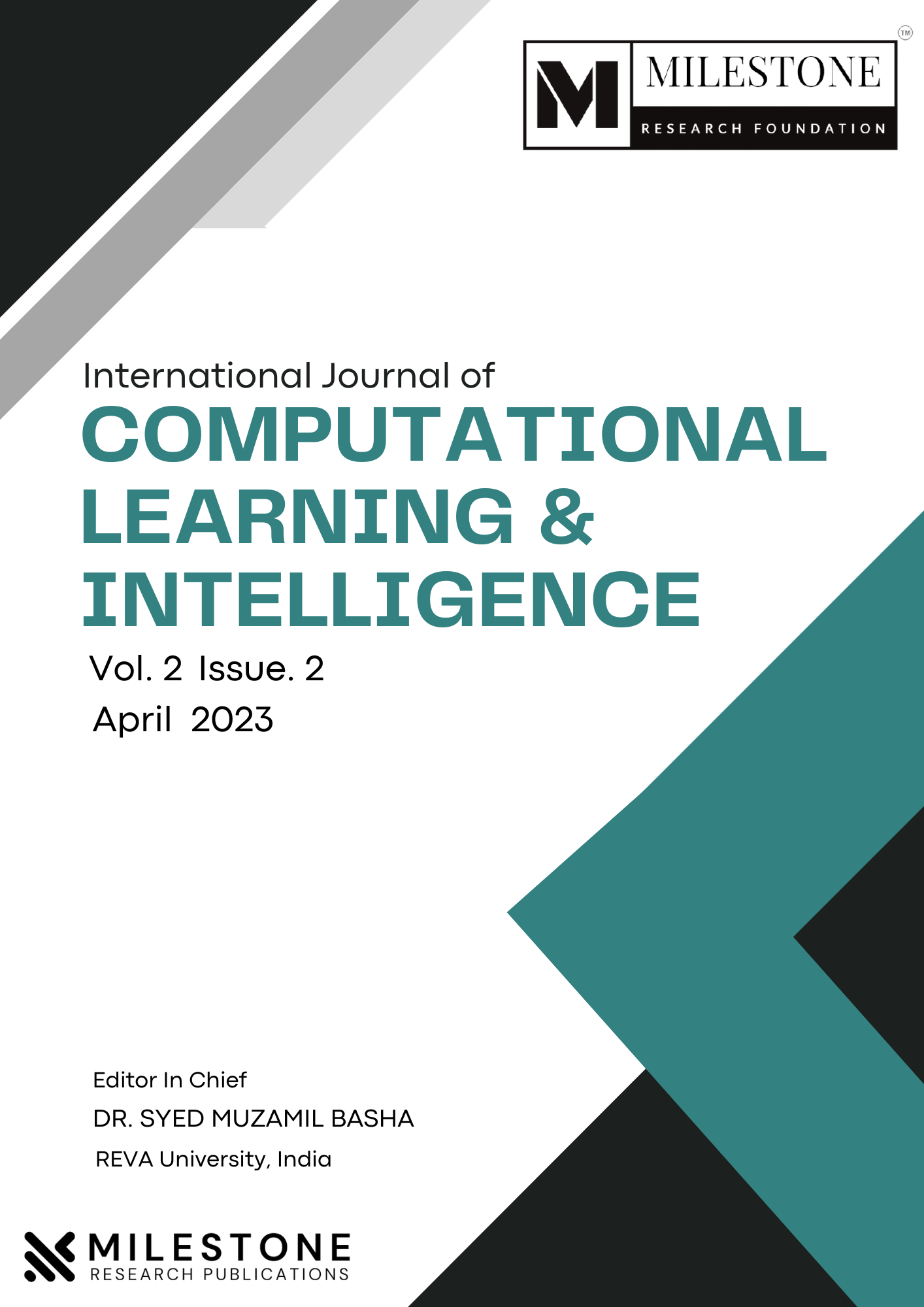RESEARCH ARTICLES
Published 2023-05-10
Keywords
- Semantic Analysis,
- Text Summerization,
- Natural Language Processing(NLP),
- Key Phrases Extraction,
- Entity Recognition
How to Cite
Udaya Rani, M Siva Krishna Teja, Lokesh Devathi, N N Udaya Kiran, & Rohith. (2023). Web Blog Using Machine Learning and Angular . International Journal of Computational Learning & Intelligence, 2(2), 70–75. https://doi.org/10.5281/zenodo.7920962
Copyright (c) 2023 Udaya Rani, M Siva Krishna Teja, Lokesh Devathi, N N Udaya Kiran, Rohith

This work is licensed under a Creative Commons Attribution-NonCommercial-NoDerivatives 4.0 International License.
Abstract
The blogging project is a client-server application built over an Google cloud firebase. Blogging, short for web logging, is an application that runs on a portal site, in which different users (and user groups) can publish and revise daily journal entries, and these entries will be made public for others to view. In essence, it gives everyone his or her own personal editorial column to publish to the world. The purpose of online website blogging is to automate the existing manual system by the help of computerized equipments and full-fledged computer software, fulfilling their requirements, so that their valuable data/information can be stored for a longer period with easy accessing and manipulation of the same. The required software and hardware are easily available and easy to work with.References
- Huang, B., & Von Lilienfeld, O. A. (2016). Communication: Understanding molecular representations in machine learning: The role of uniqueness and target similarity. The Journal of Chemical Physics, 145(16), 161102.
- Haarnoja, T., Ha, S., Zhou, A., Tan, J., Tucker, G., & Levine, S. (2018). Learning to walk via deep reinforcement learning. arXiv preprint arXiv:1812.11103.
- Ahmed, S. T., Singh, D. K., Basha, S. M., Abouel Nasr, E., Kamrani, A. K., & Aboudaif, M. K. (2021). Neural network based mental depression identification and sentiments classification technique from speech signals: A COVID-19 Focused Pandemic Study. Frontiers in public health, 9, 781827.
- Lapan, M. (2020). Deep Reinforcement Learning Hands-On: Apply modern RL methods to practical problems of chatbots, robotics, discrete optimization, web automation, and more. Packt Publishing Ltd.
- Ziatdinov, M., Dyck, O., Maksov, A., Li, X., Sang, X., Xiao, K., ... & Kalinin, S. V. (2017). Deep learning of atomically resolved scanning transmission electron microscopy images: chemical identification and tracking local transformations. ACS nano, 11(12), 12742-12752.
- Sreedhar, K. S., Ahmed, S. T., & Sreejesh, G. (2022, June). An Improved Technique to Identify Fake News on Social Media Network using Supervised Machine Learning Concepts. In 2022 IEEE World Conference on Applied Intelligence and Computing (AIC) (pp. 652-658). IEEE.
- Campesato, O. (2020). Angular and Deep Learning Pocket Primer. Mercury Learning and Information.
- Li, W. J., Yen, C., Lin, Y. S., Tung, S. C., & Huang, S. (2018, February). JustIoT Internet of Things based on the Firebase real-time database. In 2018 IEEE International Conference on Smart Manufacturing, Industrial & Logistics Engineering (SMILE) (pp. 43-47). IEEE.
- Su, X., Xue, S., Liu, F., Wu, J., Yang, J., Zhou, C., ... & Philip, S. Y. (2022). A comprehensive survey on community detection with deep learning. IEEE Transactions on Neural Networks and Learning Systems.
- Ahmed, S. T., & Basha, S. M. (2022). Information and Communication Theory-Source Coding Techniques-Part II. MileStone Research Publications.
- Siddiqha, S. A., & Islabudeen, M. (2023, January). Web-Page Content Classification on Entropy Classifiers using Machine Learning. In 2023 International Conference for Advancement in Technology (ICONAT) (pp. 1-5). IEEE.

